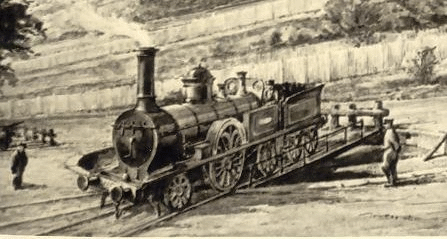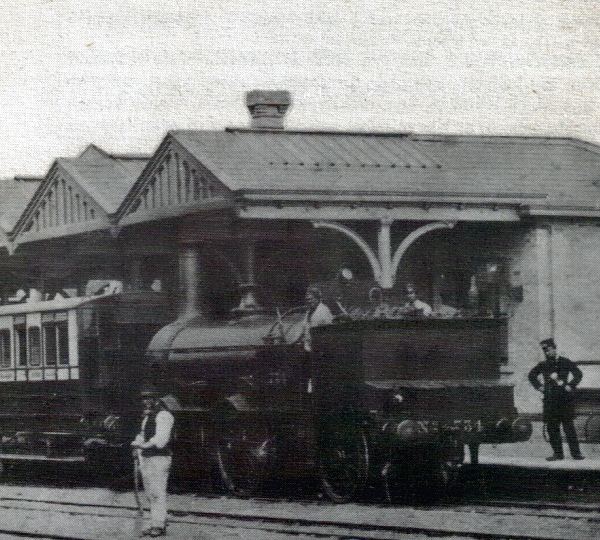The Branch line to Sutton Coldfield opened for passenger traffic on June 2nd 1862, and the owner of the line, the London and North Western Railway Company, had to produce the locomotives and rolling stock which would operate the service. At the end of October 1861 James Edward McConnell, Locomotive Superintendant for the Southern Division of the LNWR, reported a stock of 363 engines, with 58 more on order, sufficient for the existing 502 miles of railway, but 43 miles of branch lines were due to open in the next year, and General Manager William Cawkwell feared they would be “hard pressed to provide adequate power”. McConnell was authorised to build ten tank engines at his headquarters works at Wolverton (near Milton Keynes). These were “M” class 0-4-2 tank engines, costing £1,784.77 each; engine no. 743 of this class worked the Sutton Coldfield Branch, and is the subject of an early photograph, but 743 was not completed until after June 2nd.
McConnell had some suitable engines available, however, built a year earlier in anticipation of new branch lines at Bedford, South Leicestershire, Rickmansworth and Sutton Coldfield. These were of a kind called Small Bloomers, with a single large driving wheel and a four-wheeled tender, -one is illustrated on the turntable in the picture of the Royal Hotel. Being a tender engine it needed to travel facing forwards, so had to be turned round on a turntable at the end of the line so that it could face the other way; no. 743, being a tank engine, could pull its train facing backwards, so did not need the turntable. The small bloomers, with seven-foot driving wheels instead of the seven-foot six inches main line version, cost £2,920 to build, and cost McConnell his job - the Company decided that his locomotives were too expensive, and he was forced to resign in 1862. The divisions of the LNWR were merged, centred on the railway town of Crewe under chief engineer Ramsbottom.
Wolverton was still a busy works, however, the rolling stock for the Sutton Branch, the set of six four-wheeled coaches, was made there. There was first, second and third class accommodation, the fares to New Street Station, Birmingham, being one shilling (5p), ninepence (3.75p) and sixpence halfpenny (2.72p); third class to London was nine shillings and tenpence (48.4p). If you caught the 8.15 a.m. train from Sutton you should arrive at New Street at 8.40, and catch a connection for London, arriving at Euston at 1.30, or for Manchester, arriving at 12.00 noon.
The report of the first rain in Aris’s Birmingham Gazette for June 3rd 1862 said that the carriages were “new, airy, roomy and comfortable”, and that a special excursion train that arrived at three o’clock had fifteen carriages, all “crowded with holiday people who had been tempted by the warm summer’s day to leave Birmingham for a country jaunt”.

